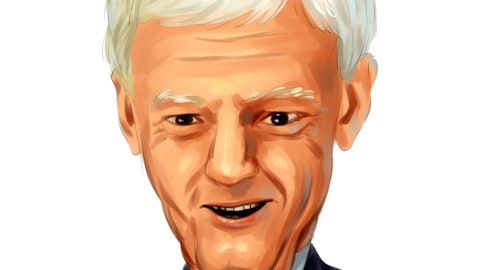We ended the third quarter with approximately $254 million of unused borrowing capacity compared with $216 million on June 30. As a result of the improved profitability and lower debt balances, our financial leverage, as measured by debt to total capital, was 61%, improving sequentially by 300 basis points. As we continue to improve free cash generation, we expect further financial leverage reductions. Third quarter 2023 total inventory and days inventory outstanding decreased modestly from the second quarter, but remained above our desired levels. Finished goods inventory decreased as we cleared units left in shipping at the end of the second quarter. Conversely, raw materials inventory increased primarily due to EMEA production challenges.
We remain focused on further efficiency gains, reducing inventory days on hand as our production rates continue to rise. We’re deploying technology tools to help maximize the use of on-hand inventory, ultimately reducing excess inventory levels over time. While supply and labor constraints can cause intermittent problems, we anticipate continued inventory improvements in the fourth quarter and more significantly in 2024. We generated cash flow before financing activities of $52 million in the third quarter, bringing our 2023 year-to-date total to $85 million. This is a significant improvement over the $7 million generated for the same nine month period in 2022. Third quarter capital expenditures were $9 million and totaled $19 million through September 30.
We’ve maintained capital discipline this year due to ongoing economic uncertainty. As a result, we’re lowering full-year 2023 CapEx estimates to $42 million. That’s $23 million below the initial forecast of $65 million. We expect to generate additional cash in the fourth quarter and make further progress in this area in 2024. As our cash flow improves, we’ll deploy these resources accretively to reduce debt and to make additional strategic growth and efficiency investments. We’re making solid progress on our objectives, and our financial results clearly demonstrate it. We’ll continue to focus on things that we can control and leverage our process discipline to effectively work through things that are outside of our control. Now I’ll turn the call back to Rajiv to discuss progress on our core strategies and programs.
Rajiv?
Rajiv Prasad: Thanks. Both Scott and I mentioned that we’ve generated significant cash flow before financing activities to-date. We expect to generate additional cash in the fourth quarter and make further progress in this area in 2024. As our cash flow improves, we’ll deploy these resources accretively to reduce debt levels and make additional investments in our strategic growth and efficiency programs. Investing in and executing our core strategies remains a top priority for driving our long-term profitable growth. Hyster-Yale’s strategies remain generally consistent with past descriptions, but I will provide a few key updates for each business. The Lift Truck business primary strategic focus remains on launching its modular and scalable products globally.
We’re also working on several other key projects to increase and enhance Lift Truck electrification, increase the adoption rate for our advanced Lift Truck technologies, transform our sales process using an industry-focused approach to better meet our customer needs and to augment further our independent dealer capabilities. We’re making solid progress on each of these programs. Over the past two years, we have launched our modular, scalable 2 to 3.5 ton internal combustion engine lift trucks in EMEA and Americas markets. This production ramp is occurring gradually, given our current extended backlogs. Customer feedback to date has been strong, and bookings and shipments accelerated in 2023. We expect to launch these products in the JAPIC market during the fourth quarter.
We’re making similar enhancements to the 2 to 3.5 ton electric truck platforms and expect these products to launch beginning later in 2024. The modular, scalable product platform is expected to enhance the business in several ways. First, by reducing cost and working capital levels as our supply chain moved closer to our flagship factories. Second, by helping to optimize our manufacturing footprint in each region and increasing revenues by providing customers with a more customizable product that better meets their needs. We’ve recently increased the number of electrified big trucks in third-party testing. During the third quarter, we delivered an electrified fuel cell reach stacker to the Port of Valencia in Spain. This joins the electrified fuel cell container handler currently operating at the Port of Los Angeles.



